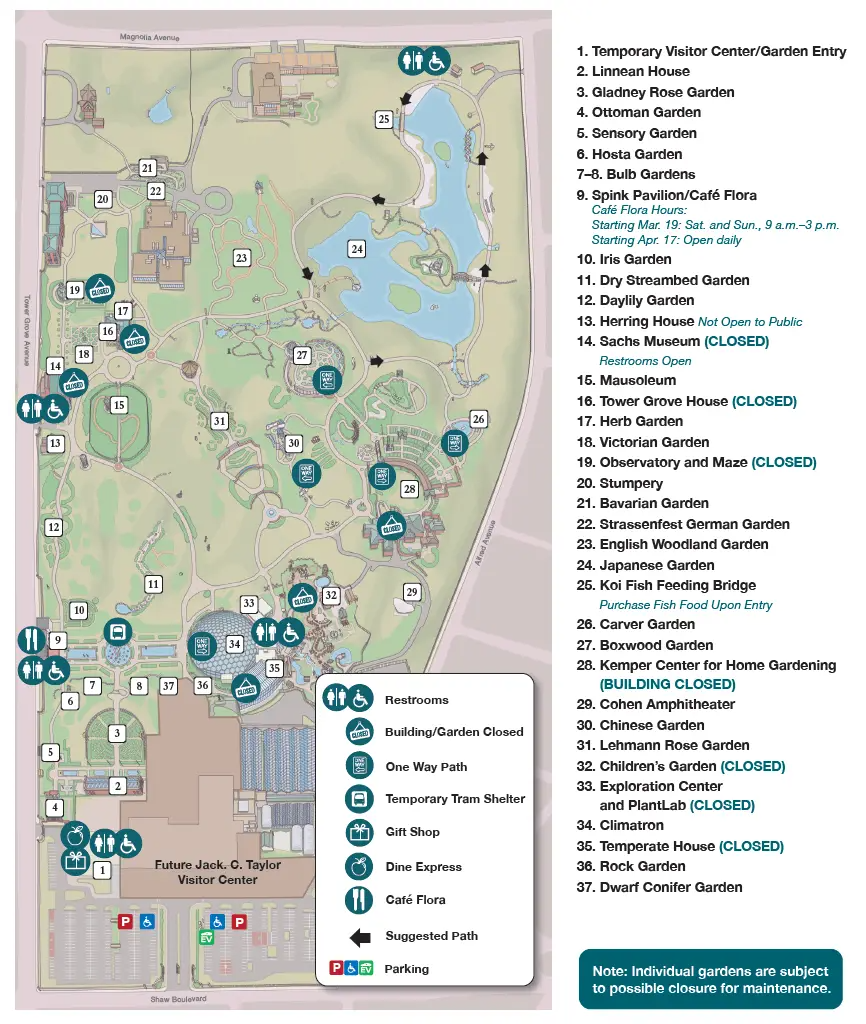The Missouri Botanical Garden was originally the garden of the wealthy businessman Shaw.
[ Analysis of the design and popular science education of the Missouri Botanical Garden ] The Missouri Botanical Garden is one of the world's top botanical gardens and one of the oldest botanical gardens and historical sites in the United States. Located in St. Louis in the central United States, the Missouri Botanical Garden was founded in 1859 by American businessman Herry Shaw. It has collected a total of 7.6 million specimens, second only to the New York City Botanical Garden in the United States, and is ranked second in the United States.
Most people may not have heard of the state of Missouri, but you must have heard of some famous people and events that came out of Missouri, such as the Japanese surrender was signed in Missouri, because it is Missouri's hometown. In addition, the well-known people are all famous people and events that people are more familiar with. There is also a very powerful company in Missouri that does this. I have written a story about Pu'er before. The first World Expo in the late Qing Dynasty was also held in St. Louis, Missouri (History of Pu'er in the late Qing Dynasty: Simao Customs, where talents emerged in large numbers).
In addition to the above celebrities, the Missouri Botanical Garden, which was built based on the garden established by the wealthy plant lover Henry Shaw, is also a world-famous institution and is well-known in the industry. The Missouri Botanical Garden is considered one of the world's famous botanical research centers and scientific education bases. People who build botanical gardens, or the national botanical garden we are about to build, must refer to the achievements, history and ideas of the Missouri Botanical Garden. To give a simple example, the English version of the Flora was compiled here. In 2015, I had the honor of visiting the Missouri Botanical Garden for a meeting and visited the narrow rooms of the herbarium. I couldn't believe that such a huge work as the Flora was created from a few small rooms like that.
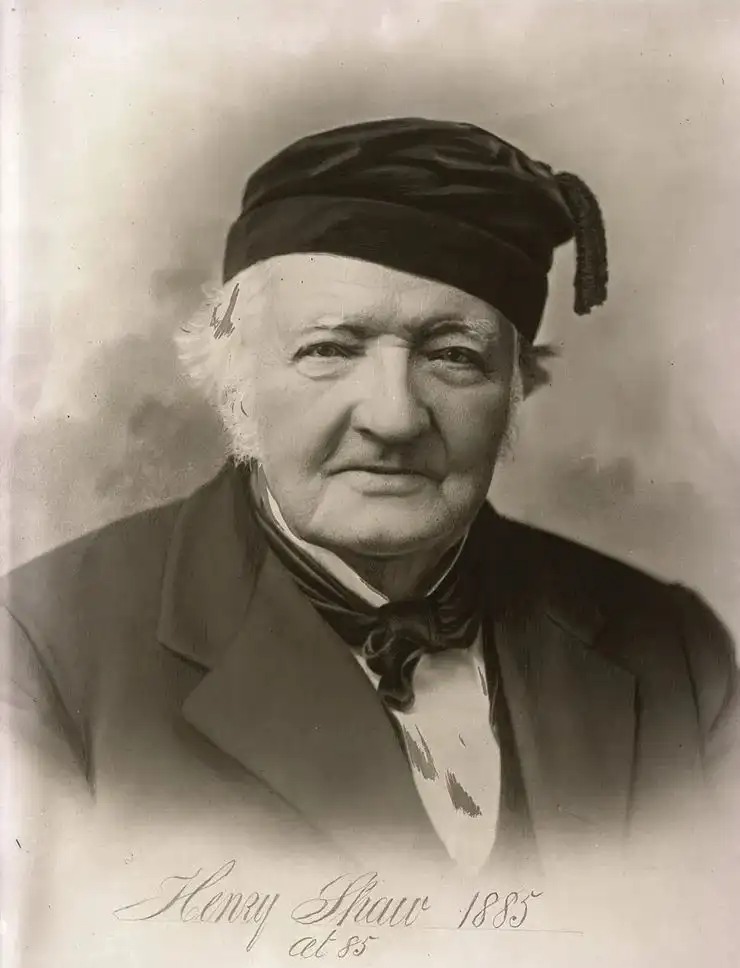
Henry Shaw, former owner of the Missouri Botanical Garden
How was the Missouri Botanical Garden built?
So, how was a world-class botanical garden like the Missouri Botanical Garden built?
First of all, the Missouri Botanical Garden has a history of more than 160 years. It has gone through such a long period of construction and has come step by step. The accumulation of history is very important for any botanical garden, which is beyond doubt. Secondly, many of the past directors of the Missouri Botanical Garden are great figures. They have different academic and ideological backgrounds. The construction of the garden reflects the understanding of these great figures on the construction of the botanical garden, and is reflected in the garden we see today.Generally speaking, the idea of building a botanical garden is relatively simple. The mainstream idea is to collect a series of plants according to plant groups, such as the Hundred Flowers Garden, the Hundred Herb Garden, the Cycad Garden, etc. However, how is the Missouri Botanical Garden built? As a world-famous garden, let's take a look at their park and ideas for building a garden, which are of great reference significance for the construction of botanical gardens and national botanical gardens.Missouri Botanical Garden mapThe Missouri Botanical Garden has a total of 37 gardens, which is similar to the gardens of Xishuangbanna Botanical Garden, South China Botanical Garden, Kew Botanical Garden in the UK, and other botanical gardens, with a total of about 40 gardens. However, the nature of each garden is very different. The Missouri Botanical Garden has collected more than 5,000 species of plants from all over the world and displayed them in the garden.
Several notable features of the Missouri Botanical Garden are:
1. Internationally display plants from different cultural backgrounds around the world;
2. Focus on conveying the relationship between plants, humans and different cultures;
3. There are many educational and experiential education venues and parks;
4. Practice green and sustainable development;
5. Focus on global plants with a broad research perspective .
Below I will mainly talk about the map and the construction of the park and the realization of the educational function of the botanical garden. This will be of great benefit to the future development of the botanical garden and the construction of the National Botanical Garden.
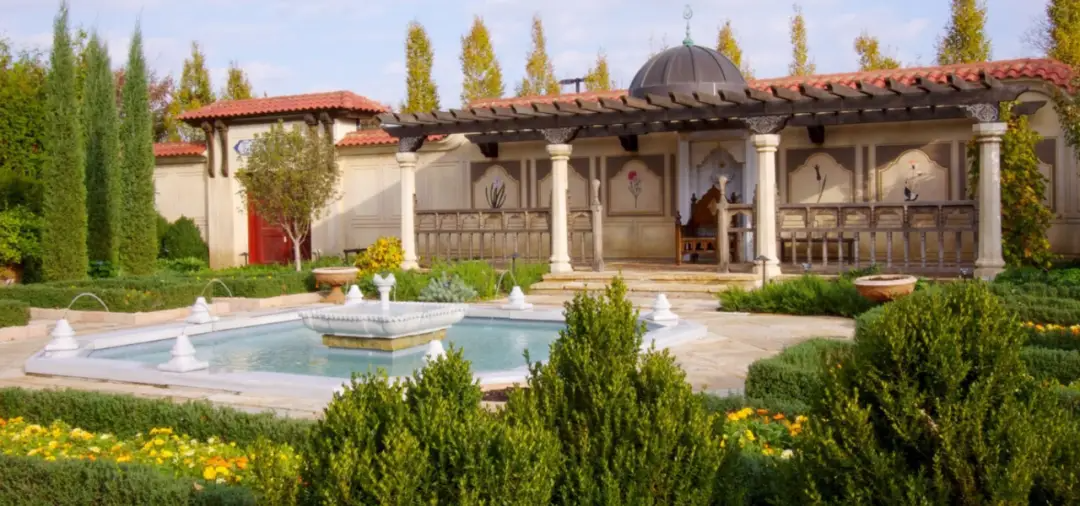
Turkish-style Ottoman GardenLooking for plants to build a garden around the world
English Woodland Garden : The English Woodland Garden was built in 1976. It is based on the traditional British forest and grows British-style plants and flowers collected from all over the world. For example, high-rise trees are oaks, maples, and tulip trees; trees are rhododendrons, azaleas, camellias, dogwoods, as well as perennial perennial flowers and wild annual herbaceous wild flowers. There is also a bronze statue of the "Three Graces" in the park, symbolizing charm, elegance and beauty, to express the beauty of the English Woodland Garden.Japanese Garden : The Japanese Garden was established in 1977. It imitates the manor culture of Japan in the 17th and 18th centuries and integrates the gardening ideas of different periods in Japan. The garden is relatively large, with mountains, rivers, pavilions, lakes and islands, turtles and cranes, cherry blossoms, tea pavilions, winter snow scenes, and Zen gardening made of white stones, fully demonstrating the purity and harmony of nature.Chinese Garden: St. Louis and Nanjing are friendly cities. The Chinese Garden, established in 1996, not only commemorates the friendship between the two cities, but also commemorates the scientific and cultural exchanges between China and the United States, especially the long-term academic exchanges between the Missouri Botanical Garden and plant research institutions. The park is based on the concept of landscape, and Taihu stones, building materials, etc. were transported from Nanjing to the United States to build traditional buildings, pavilions and porches with white walls and black tiles. The garden is planted with traditional plants, flowers and bonsai such as peony, bamboo, weeping willow, plum blossom, pine, lotus, azalea, orange, hibiscus and false forsythia. The walls are also painted with traditional elements and Wang Wei's exquisite poems about nature. The English version of Flora was completed by a group of scientists from the Missouri Botanical Garden.Ottoman Garden: The Ottoman Empire was an empire established by the Turks more than a thousand years ago. Its territory surrounded the Mediterranean and spanned Africa, Asia and Europe. This garden was mainly donated by Edward Bakewell, a philanthropist in St. Louis, after his death. Bakewell had a deep Turkish complex and visited Istanbul many times. He was in love with the gardens of the Ottoman Empire. Since St. Louis and Istanbul are close in latitude, the Missouri Botanical Garden established the Ottoman Garden in 2006 to showcase Turkey's garden culture and native plants. The garden is based on the gardens of the Ottoman period, with fountains, sculptures and decorations, and planted with aromatic plants, herbs, tulips and pomegranates of the time. The garden not only displays a historical garden, but also has a good exotic style. I didn't understand the meaning of the garden when I visited it many years ago, but it felt so good while walking around.Bakewell Ottoman Garden: The garden is centered on a bronze sculpture of George Englmann, a German botanist who immigrated to the United States. It collects and displays some native plants from Germany and Central Europe. Englmann was a German doctor and botanist, and was a good friend of the founder Shaw. He strongly recommended Shaw to establish a botanical garden and assisted the Missouri Botanical Garden in formulating a high-end research plan. Englmann loved plants all his life and did a lot of research on plants in the western United States and Mexico, especially in the study of cacti. After his death, he donated 95,000 specimens he collected to the botanical garden. This garden not only commemorates him, but also displays some native plants in Germany.
Japanese Garden
Bavarian Garden : Bavaria is a region in southern Europe that spans eight countries. The Alps pass through this region. The region has complex terrain and a large altitude difference, which is suitable for the growth of alpine plants. The Bavarian Garden is to collect and display alpine plants from all over the world, such as Europe, the Caucasus Mountains in Russia, and the Rocky Mountains in the United States. Missouri has a temperate climate, with high latitudes and heavy rainfall in summer, which is not very suitable for the growth of alpine plants. Therefore, the garden staff planted strange cushion-shaped, herbaceous or strange perennial plants through stone arrangement, drainage treatment, etc., bringing a unique plant experience to Missourians.Carver Garden : Established in 2005, it commemorates George Washington Carver, a famous Missouri agricultural and educational expert. Carver was a black man who was born into a serf family. He gradually became interested in plants and nature, and eventually became a world-renowned agronomist and sustainable development expert. Carver Garden covers an area of 1.5 hectares, with a bronze sculpture holding a plant as the center, planting important agricultural crops, and stimulating people's interest in plants, crop sustainability and black scientists.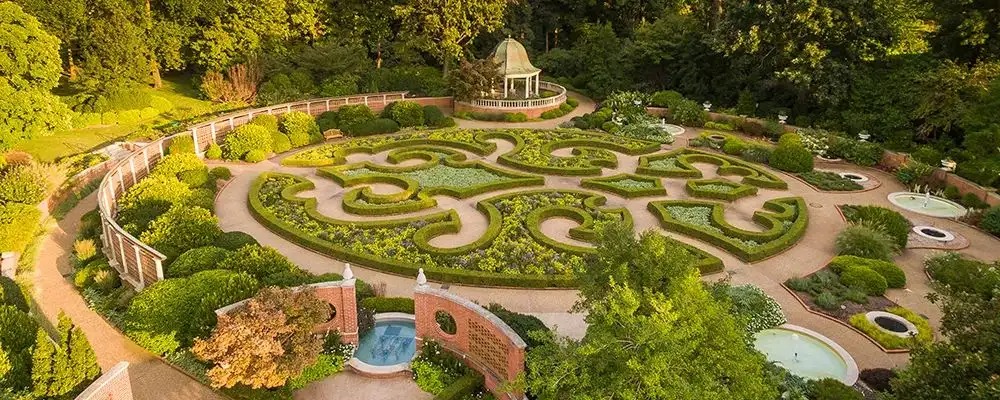
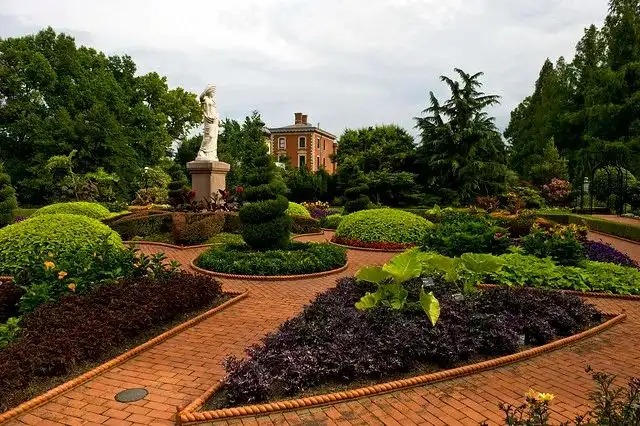
Victorian District
Victorian District : In 1885, the founder Shaw introduced some horticultural flowers and plants from the UK and planted them here to form a flower carpet. Later, as Shaw traveled around, he renovated it many times, adding maze pavilions, cacti and succulent plants, observation towers, etc., initially forming a geometrically symmetrical garden style of the British Victorian era. In 2008, after receiving the donation, the Missouri Botanical Garden renovated and upgraded it again on this basis, introducing more content, such as herb gardens, aromatic plants, the old residence of the maintainer, Shaw's cemetery, etc., and finally a Victorian garden designer designed and completed the construction. The park has both the cultural and historical relics of the founder and a unique European gardening concept, which is quite interesting.Conservatories: Rose garden, magnolia garden, hosta garden, tulip garden, boxwood garden, azalea garden, rock garden, herb garden, daylily garden, iris garden, etc. are all small and exquisite and very wonderful. In addition, the Missouri Botanical Garden has collected a large number of Araceae and Orchidaceae plants in the greenhouse, which are all world-famous. These are similar to our domestic botanical gardens, especially the botanical gardens of the Chinese Academy of Sciences, which are based on plant taxa and strengthen the collection of special features.
Climatron
Linnean House : A stained glass building created by founder Henry Shaw in 1882, it is used to grow plants that are difficult to overwinter in Missouri, such as oranges, camellias, azaleas, heather, and some important economic plants from all over the world, such as tea from China, olives from Europe, jasmine from the Middle East, etc. The greenhouse is named after Linnaeus, the father of plant taxonomy, to commemorate the birth of botany, and to showcase the collection ideas and practices of the founder of Missouri and the early days of the park.
Temperate House : The Temperate House was renovated from the Mediterranean House in 1913 and was finally completed in 1990. This greenhouse mainly collects plants from temperate regions with dry and hot climates, such as the Mediterranean region, South Africa, California, South Australia, etc., especially those with extremely important economic significance, such as figs, grapes, olives, carob, European cork oak for making wine barrels, etc.
Tropical Rainforest Conservatory (Climatron) : The Tropical Rainforest Conservatory is one of the most handsome parks in the Missouri Botanical Garden. It mainly collects and displays tropical plants. The building is a large round glass house. It was officially built in 1960 with a "geodesic dome" design mode (The first geodesic dome), and was later rated as one of the 100 most important buildings in the United States. The word Climatron means that the indoor climate can be automatically controlled. Walking into it is like entering a tropical rainforest, with lush vegetation and more than 1,400 tropical plants from all over the world. Such as the famous cocoa, coffee, bananas, double coconuts, etc. Among them, the most popular among the audience is the exquisite tropical orchid and bromeliad plant display.
Butterfly Garden: Peter Raven, the former director of the Missouri Botanical Garden, is not only a world-renowned botanist and educator, but also a great naturalist. One of his most famous papers is about the coordinated evolutionary relationship between butterflies and plants. He was named "Hero of Planet" by Time magazine. The Butterfly Garden was built outside the botanical garden in a park in St. Louis and officially opened in 2000. The garden has planted more than 100 species of plants from all over the world and collected more than 60 species of butterflies to show the relationship between butterflies and plants. There is a small area in the Children's Garden and Family Gardening Center of the Missouri Botanical Garden that also displays the theme of butterflies and plants. This kind of ecological concept theme park construction is a relatively popular concept in the United States.
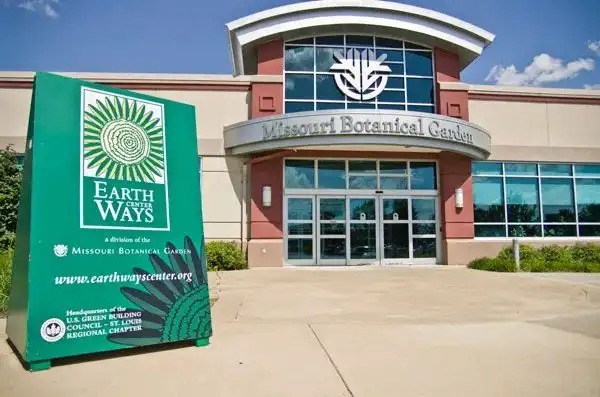
The EarthWays Center
Numerous educational centers
Many botanical gardens, zoos or reserves, and even museums and science and technology museums have science or education facilities and personnel, but most of them are just fake and lack understanding. The Missouri Botanical Garden's diversified park construction, education and experience design provide us with a window of understanding from the surface, which is unique. My simple visit and study did not allow me to fully understand how they set up personnel, how to operate and maintain creation and implementation, and I could only analyze it from the perspective of hardware, but it was also very amazing. a. Visitor Center , where visitors can get tourist information and buy various botanical cultural products and books (Map 1); the number of visitors to the Missouri Botanical Garden is comparable to that of our Xishuangbanna Botanical Garden, but the quality, information services, and concepts of the Visitor Center are still far behind. When we first arrived at the site, we saw that their maps were in six or seven languages and they could provide self-service. It was simply amazing... This level of internationalization, seven years later, I am still amazed today. I won’t say more here, and I will talk about the Visitor Center later.b. The Sensory Garden allows visitors to experience plants by smelling, touching, and so on (Map 5); the blind are also fully taken into consideration and can feel the plants through close contact.c. The Sachs Museum (Map 14) displays various botanical artworks collected from Herry Shaw to the present day, such as ceramics, sculptures, and paintings; and regularly curates various botanical art exhibitions;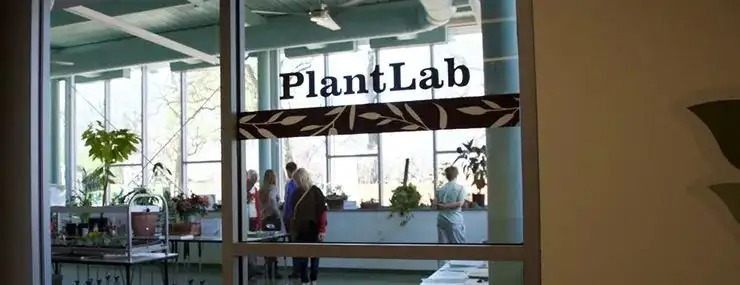
Kids Discovery and Plant Lab
d. Kemper Center for Home Gardening (Map 28), the center is mainly to encourage families in the western United States to improve the gardening and aesthetic level of the community and family through plants and gardening, so that ordinary people can make better use of plants. It is a bit like our current beautiful countryside construction demonstration. The gardening center has a total of 23 demonstration gardens, including butterfly gardens, secret gardens, vegetable gardens, aromatic plant gardens, lawn and shrub landscape demonstration gardens, flower beds, children's gardens, herbal gardens, bird-attracting plant gardens, etc. The main building of the center also has a library, classrooms, information desks, etc. The entire home gardening center is managed and operated by 6 full-time gardeners and more than 200 volunteers.e. Children's Garden : In order to let children experience the fun of nature and the importance of plants, a wealthy businessman donated and established a children's garden in 2006. The children's garden has more than 20 themes, where children can play, climb books, explore nature, observe pollinators, and learn about natural landscapes. The children's garden also has a children's version of the Discovery Center and a small plant laboratory (PlantLab) for children to learn about science, do handicrafts, etc. (Map 33)f. The EarthWays Center : This center was officially developed on Earth Day and is dedicated to providing sustainable development education services for students of different ages, college students, teachers, social personnel and staff. Topics include resource recycling and energy for students, sustainable development for college students, green summer camps for youth, energy conservation for families, green consulting advice, and energy-saving building guidance.g. Various interactive and animal facilities: Each park fully considers the interaction with the public and children, such as the maze in the Victoria Garden (Map 20), the unique koi in the Japanese Garden (Map 25), the outdoor theater (Map 29), etc., which are very thoughtful.d. Clear popular science interpretation system . The Missouri Botanical Garden interpretation system is divided into multiple themes, separated by symbols and colors. The themes are divided into: sustainable development and protection, history and relics, plants and people, garden art, art and culture, plants and diversity, medicinal plants, etc. Each module has its own differentiation and emphasis, and each educational theme is deepened one by one. We have learned from others to re-plan the popular science interpretation system and are gradually implementing it, but the tension is still relatively small and needs to be accelerated.In short, I have been studying the development, construction and education service models of top botanical gardens in Europe and the United States in the past few days before the New Year, and I have a lot of feelings. Whether in the research theory, the idea of building the garden, the education model, or the idea of serving the people, botanical gardens still have a long way to go.Note: The information and pictures are from the official website of Missouri Botanical GardenScience Popularization Theory and Environmental Education Thinking Series:
“30×30 Goal”: How big is the challenge of biodiversity conservation in Yunnan?
Observation and Comments on COP15 and COP26: Beware of Game Struggles that Tear Environmental Cooperation
COP15 Historical Review: Why do foreign “plant hunters” love Lijiang?
COP15-“Talking about Relationships”: A New Perspective on Biodiversity Education
COP15 Commentary: Some thoughts on the success or failure of the publicity and education campaign on the migration of elephants to the north
COP15 Elephants: A picture explains why elephants head north to Kunming?
COP15 Commentary: Why can’t Yunnan tell the story of biodiversity well?
COP15 Commentary: "Spring City Invitation" at the Foot of Changyao Mountain
Thoughts on cop15: Thoughts on the inspection by the Director of Yunnan Provincial Environmental Protection Department
COP15 Commentary: Biodiversity conservation urgently needs “Pasteur-style” research and practice
COP15 Travel Notes: Comments on the Erhai Lake Ecological Corridor in Dali
Thoughts on COP15: Conservation work at Xishuangbanna Botanical Garden
COP15 Record: Lincang "Iceland" Ancient Tea Mountain Investigation Record
Why can't I feel the significance of plants? A brief discussion on the role of environmental interpretation in cultural tourism
Science popularization outline and big names overturned: some new thoughts on science communication in 2021
Banna Jun's science work in 2020: a year of creative passion amid the pandemic
How to enhance the educational function of museums? 2020 Dialogue with the Director of Shanghai Science and Technology Museum
2016: Visit and inspection of Shanghai Natural History MuseumBeijing Teaching Botanical Garden: Talking about Mr. Wu Han’s thoughts and layout on botanical garden educationPlant Art and Cultural Collection: Enlightenment of the Forbidden City Flower and Tree Exhibition to Botanical Gardens
British explorer Ray Mears: I spend my life outdoors to convey the relationship between man and nature
Summary of the 2019 Banna Jun Science Popularization Work: Combined with Park Creation, Enhanced Theoretical Conversion, and Strengthened Media Cooperation
Old scientific objects | Botanical and ecological instrument collection of Xishuangbanna Botanical Garden
2018 Banna Jun's popular science creation: inheriting the scientific spirit and opening up public science
Plant protection: those decorative plants on the Luosuojiang Forum
A small book about palm plants: "Funny Palm Country"
Impressions of the Xiangshan Science Forum
Xishuangbanna Botanical Garden: Why do figs grow on palm trees?
The ecological dilemma
Several environmental education masters and their thoughts
A brief discussion on the meaning of "knowing the names of insects, fish, birds, beasts, plants and trees"
Natural history is more than just knowing more about plants and animals: Thoughts on reading the natural history of the 18th century
What does a nature and environmental education center look like? Let’s take a look at the American example
Evolution literacy: Thoughts on raising children as a “biologist”
Data awareness training: a new direction in science education
Micro power: 200 micro science articles on ecology and nature
Is scientific thinking really more important than knowledge?
Climate change education: Should we tell our children about those “troubling” environmental problems?
How to use plant names or Chinese herbal medicine knowledge to teach nature? Taking the parasitic plant Ziziphus chinensis as an example
Lu Xun, textbooks, Xinhua Dictionary and natural education
Nature and Humanities: An Analysis of Environmental Education Behind the Amazon Forest Fire
Plant Science Planning and Conservation Strategy at the New York Botanical Garden
From Xi Zhinong to the Environmental Protection and Science Gallery, the road is long and arduous
Daily Records of Banna's Biodiversity: iNaturalist User Manual
The dark history of museums: the slave trade behind the specimens
Langya Elm: The Botanical History Behind a Unique Name
Conceptualizing Botanical Garden Construction: A Visit to the University of Tennessee Botanical Garden
"Writing Articles on the Earth": The Long March Spirit of the Best Botanical Gardens
Talking about the rise of botany: scientific research is actually a poor man’s game
The association of picking grapefruit: trade fairs and plant science festivals
How to tell the story of the Qinghai-Tibet Plateau with the fish from Banna?
DLIA: A citizen science project to survey species in the Great Smoky Mountains National Park, USA
Luosuojiang Forum: Boating, drinking wine, and talking about science
From the National Science Library to the 798 Art District
"Wallace Book House" in Xishuangbanna Botanical Garden
World Book Day: Recommend 6 popular science books on plants
From health to environment: the cultivation path of environmentalists
What is environmental education? The origin, connotation and evolution of environmental education
The difference between popular science and environmental education
Let’s talk about “Environmental Education and Science Popularization”
Why don't we spend some money every now and then? Let's talk about technology investment
Above the clouds: Brown Mountain Science Tour
Seen and Unseen: The Hidden and Present of Cycad Garden

